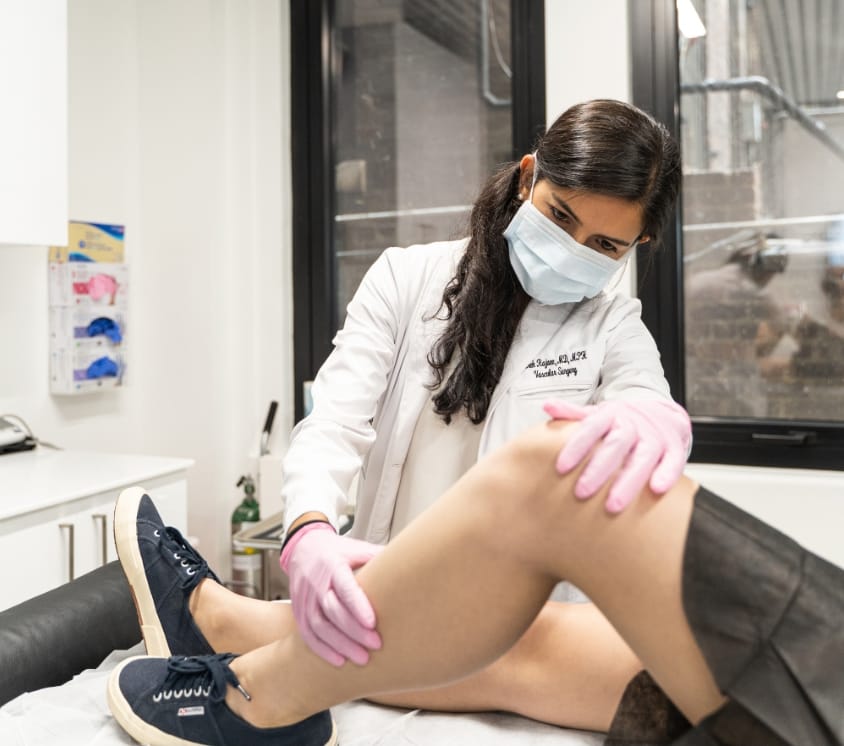Does Spider Vein Removal Really Work? And Other FAQs
Does spider vein removal really work?
Spider veins are a vascular problem that can occur in any part of the body. They may be blue, red, or purple and can look like dense clusters of spider webs. Spider veins are usually found on the legs but can occur on the face as well. Laser treatment and sclerotherapy are two popular methods for treating spider veins. But do they really work?

Laser treatment involves using a beam of light to heat up and destroy the veins. This treatment is usually done in a doctor’s office or outpatient center. Sclerotherapy is another option for treating spider veins. This involves injecting a sclerosing solution into the veins, which causes them to collapse and fade away. Sclerotherapy is usually more effective than laser treatment, and the results may appear in a few weeks.
If you choose the right treatment and follow the instructions carefully, you can expect to see a significant improvement in the appearance of your spider veins. However, it is important to remember that spider veins are a chronic condition, often caused by underlying chronic venous insufficiency. That means your spider veins will likely return at some point in the future, especially if your vein doctor doesn’t diagnose and treat underlying vein disease.
Vein Treatment Clinic is a group of state-of-the-art spider vein and varicose vein clinics specializing in cutting-edge, minimally invasive spider vein treatments. Our vein doctors carefully examine your leg veins, discuss your symptoms, and curate a personalized treatment plan to diagnose the root cause of your condition. You can find our state-of-the-art spider vein and varicose vein centers in New York, Long Island, Maryland, California, and New Jersey.

Please schedule an appointment at your nearest spider vein clinic to explore your treatments.
What is the most effective treatment for spider veins?
If you are concerned about the appearance of spider veins, there are a few things you can do to treat them. You can wear compression stockings, which will help to reduce the appearance of the veins. You can also exercise regularly, which will strengthen the veins and improve circulation, thus alleviating some of the worst symptoms of vein disease. But the only way to treat spider veins is through minimally invasive procedures, such as sclerotherapy, endovenous laser ablation, radiofrequency ablation, and venaseal.
The following are some of the most effective treatments for spider veins:
- Escleroterapia: Sclerotherapy is considered the gold standard for treating spider veins. It involves injecting a solution directly into the vein, which damages the vein wall. This causes the vein to collapse and eventually fade away.
- Endovenous Laser Ablation: Endovenous laser ablation is a minimally invasive treatment that uses laser energy to heat and damage the vein wall. This causes the vein to collapse and eventually disappear. This procedure addresses the root cause of spider veins, so it can minimize the risk of spider vein recurrence.
- Endovenous Radiofrequency Ablation: Endovenous radiofrequency ablation is a minimally invasive treatment that uses radiofrequency energy to heat and damage the vein wall. This causes the vein to collapse and eventually disappear. This procedure also treats chronic venous insufficiency, the root cause of spider veins.
- VenaSeal Treatment: Venaseal is a minimally invasive treatment that uses a medical adhesive to seal the vein. This treatment is often used for larger veins that are not suitable for sclerotherapy or ablation. VenaSeal is a relatively new treatment for vein disease.
How successful is spider vein treatment?
Sclerotherapy is a procedure that has been used to treat spider veins for decades. The success rate of sclerotherapy is quite high, with most people seeing a significant improvement in the appearance of spider veins after just one treatment. However, the success of sclerotherapy for spider veins does vary from person to person. Some people may require multiple treatments before they see any results, and others must combine sclerotherapy with other minimally invasive treatments for underlying chronic venous insufficiency.
Is it worth it to treat spider veins?
If you have spider veins, you may wonder if spider vein treatment is worth the cost. Spider vein treatment can be costly, and insurance coverage isn’t always guaranteed because it’s not always a medical necessity. However, spider veins cause considerable self-consciousness, and they’re often symptomatic of underlying vein disease, which must be treated for medical reasons. As such, spider vein treatment is usually worth the cost and effort.
Which is better for spider veins: laser or sclerotherapy?
If you’re looking to get rid of spider veins, you may be wondering which treatment is best. While laser therapy is often advertised as the most effective treatment, sclerotherapy is actually a better option for most people. Here’s why:
Sclerotherapy works by injecting a solution into the spider veins, which causes them to collapse and fade away. The procedure is relatively quick and easy, and it can be done in your doctor’s office. Laser therapy, on the other hand, works by damaging the veins with heat. This is a relatively ineffective procedure, and you may require multiple sessions to see results.
Overall, sclerotherapy is a safer, more effective, and less painful option for treating spider veins. If you’re considering treatment for your spider veins, be sure to consider sclerotherapy.
Can you reverse spider veins naturally?
Spider veins are a pain—literally. Those pesky little blue and red veins that show up on your legs can cause aching, throbbing, and even cramping. And, to top it all off, they’re unsightly. You don’t have to just deal with them, though. There are some things you can do to get rid of spider veins, or at least make them less noticeable.
Wearing compression stockings is one of the most effective ways to reduce the appearance of spider veins. They increase the pressure on your veins and force blood to flow more efficiently. This can reduce the size of your veins and make them less visible. Exercise is another great way to reduce the appearance of spider veins. When you exercise, your muscles contract and push the blood through your veins, which reduces the pooling of blood that can cause spider veins.
However, home remedies and lifestyle changes can’t treat the root cause of spider veins. These methods can only provide temporary relief and alleviate some of the symptoms. The only way to eliminate spider veins and treat the root cause is through minimally invasive spider vein treatments performed by skilled, board-certified vein doctors.
Book a Consultation
Scheduling a consultation with one of our vein treatment experts is one of the best ways to determine the proper resolution for your varicose veins. The treatments can include sclerotherapy, laser or radiofrequency ablation, a medication called Varithena, or procedures such as Venaseal, or Clarivein.
Dr. Andrew Cortes
Doctor de venas en New Jersey
SUNY Downstate Medical Center
Dr. Sahil Patel
Doctor de venas en New Jersey
Rutgers University
Dr. Billy Schoenfeld
Doctor de venas en San Diego
Harvard University
Dr. Juan Montoya
Doctor de venas en New York
Yale University
Dr. Carly Guthrie
Doctor de venas en San Diego
Harvard University
Dr. Shane Volney
Doctor de venas en New York
Harvard University
Dr. Laura Lombardi
Doctor de venas en New York
Harvard University
Dr. Kamran Saraf
Doctor de venas en Maryland
Georgetown University
Dr. Sareh Rajaee
Doctor de venas en New York
Yale Medical School
Dr. Zalekha Shair
Doctor de venas en Long Island
New York Medical College
Dr. Todd Kobrinski
Doctor de venas en New Jersey
George Washington University
Dr. Walter Lech
Doctor de venas en California
Harvard University
Dr. Jeffrey Deygoo
Doctor de venas en New Jersey
George Washington University
Dr. Lisa Alford
Doctor de venas en Maryland
McGill University
Dr. Jasmine Koo
Doctor de venas en San Diego
University of Washington
Dr. Michael Nguyen
doctores de venas
Harvard University
Dr. Caroline Novak
doctores de venas
Northwestern University
Dr. Kimberly McFarland
Doctor de venas en California
SUNY Downstate Medical Center
Dr. Jonathan Hemli
Doctor de venas en New York
University of Pennsylvania
Dr. Gulshan Sethi
Doctor de venas en Long Island
University of Buffalo
Dr. Farshid Etaee
Doctor de venas en California
Yale-New Haven University
Dr. Jack Bulat
Doctor de venas en New York
Harvard Medical School
Dr. Joshua Kindelan
Doctor de venas en California
Uniformed Services University of the Health Sciences
¡Trata tus venas várices!
Sabemos que los seguros de salud pueden ser confusos, así que te ayudaremos a verificar si estás cubierto.








